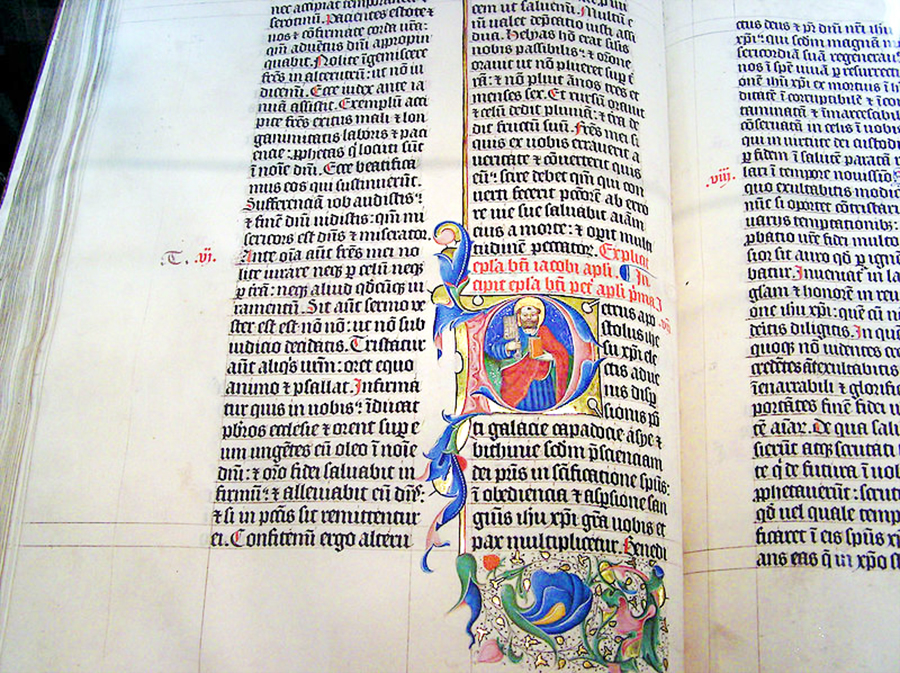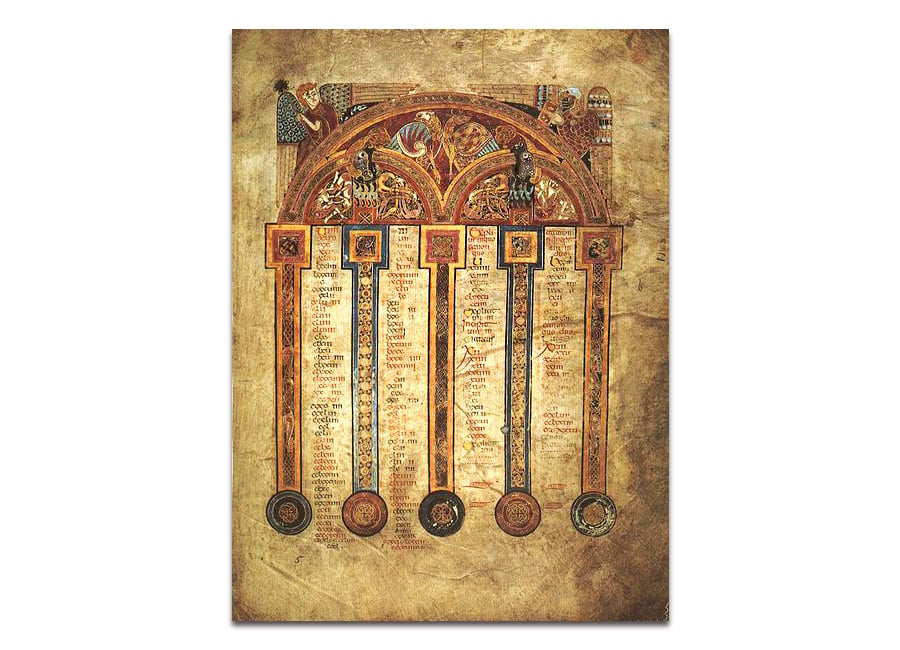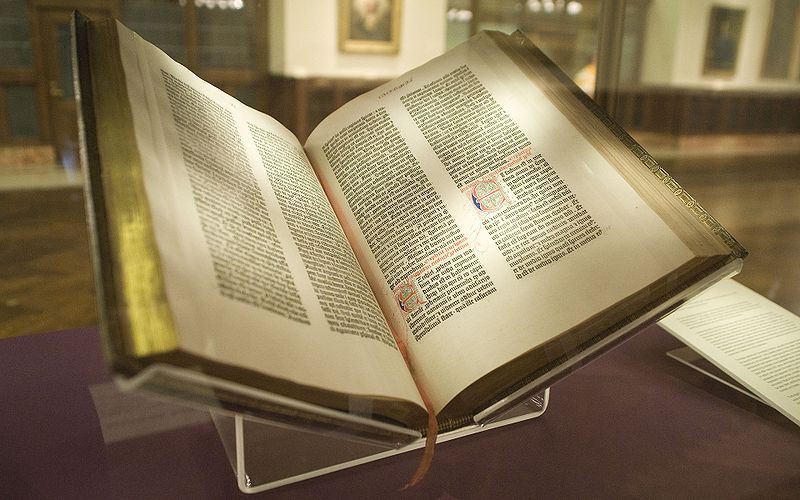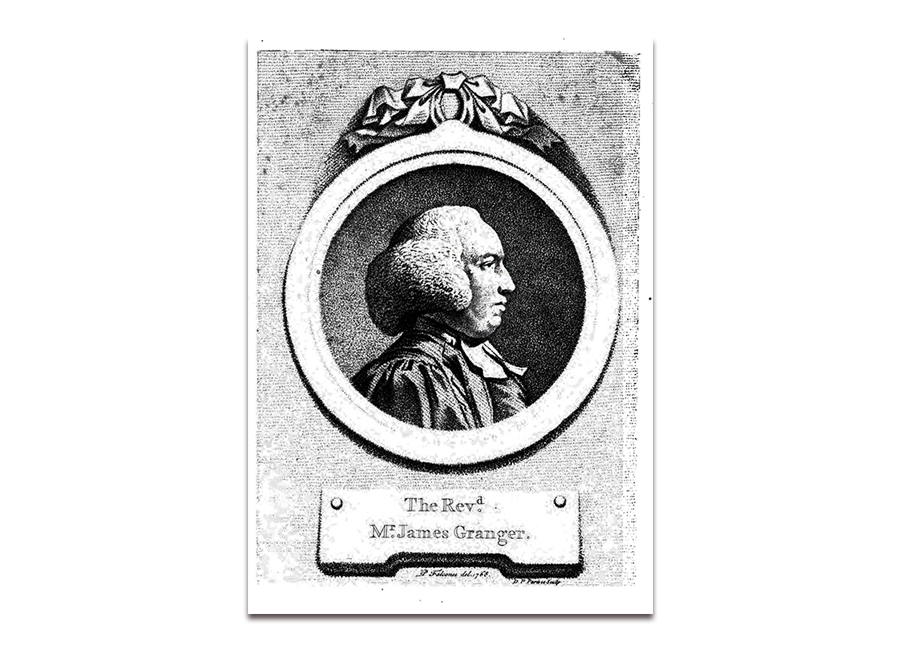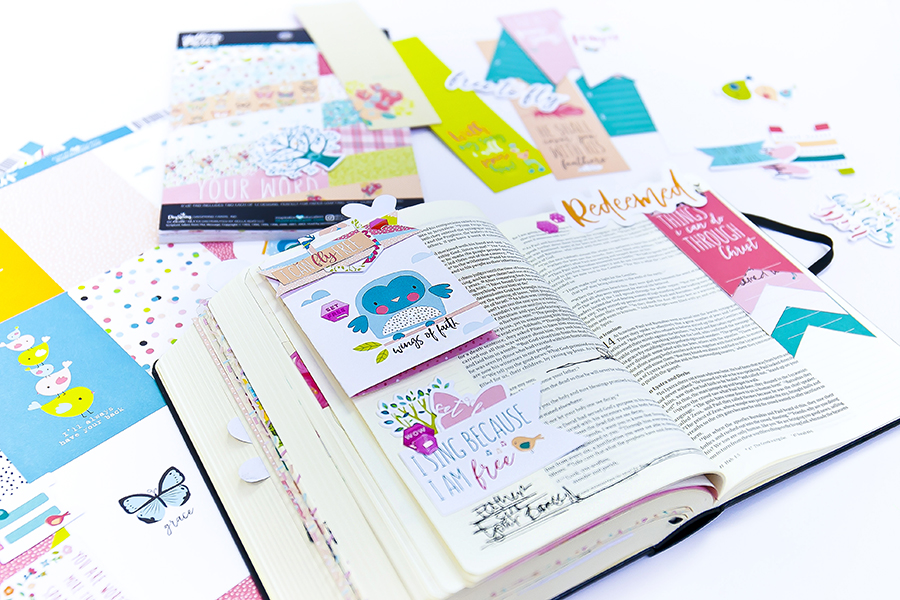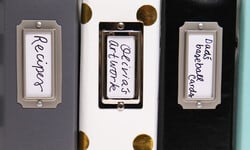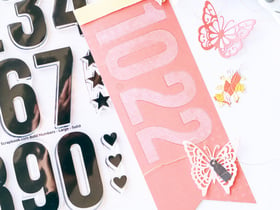Over the past two years, the art of Bible journaling has burst onto the scrapbooking scene. A creative combination of art journaling and Bible study, this activity that might seem new to crafters is not so new at all to Bible historians. Bible journaling has roots that actually date back centuries.
Illuminations as a Necessity
In the Middle Ages, before the invention of printing, the Bible, and most other books, were replicated, then distributed, by hand-copying. Bibles were hand copied in monasteries and artists were sometimes utilized to add hand drawn illustrations (called illuminations) to the volumes. These illustrations were more than just decorative – they were vitally important as explanatory tools. A large portion of the world’s population in the Middle Ages was illiterate, and the Bible was forbidden by the church from being distributed to anyone but clergy, and in any language but Latin. Only the highly educated of the period could actually read and understand their religion’s most revered text, which is why illuminations weren't only nice additions, but also necessary.
Illuminations - aka illustrations - could be added to Bibles in one of two ways. They could be created on separate pages (or leaves, as they were called) and then bound into the book along with the rest of the pages. Or, similar to today’s Bible journaling, they could be created in space left for them on the page by copyists directly alongside the book’s text.
One of the earliest surviving examples of an illuminated book of Gospel is the Book of Kells. This Irish manuscript, believed to have been created around the year 800, is written in Latin and contains the New Testament’s four Gospels. Its intricate and lavish artworks are considered among the peak examples of the art of illumination. The Book of Kells can still be viewed today, in person, at Dublin’s Trinity College Library or in the Library’s online archive.

You can see more images from the Book of Kells here.
Extra-Illustrating and Grangerizing within Bibles
The invention of the printing press by inventor Johannes Gutenberg, in the mid-1400’s, changed the replication of the Bible’s text from hand copied to printed by press, but illustrations could still not be mass produced in the same way as text. The Gutenberg Bibles, like the hand copied ones before them, came off of the presses with wide margins and spaces left in the text so that artisans could go to work on hand illustrating decorative elements (after print) such as titles, opening letters, and section breaks. Paying artisans to work by hand and decorate the already pricey volumes was expensive. The lavishness of the illustrations, and the details - such as gold leaf insets, became a way for the societal elite to display their wealth.
About 100 years after Gutenberg, the process of hand illustrating books had died out. But by the 1700’s, another practice called “extra-illustrating” had gained popularity as a way to add images to the Bible and other books. This process, somewhat similar to how scrapbooks or altered books are assembled today, involved adding extra images to a book’s pages to illustrate it. Sometimes illustrations were added to the pages already in the book. Or in other instances, a book’s binding was actually taken apart so additional pages could be inserted for illustrations before the book was reassembled again.
In fact, it’s quite possible that the first “extra-illustrated” books were not created for decorative purposes but instead, were created as acts of political and religious dissent. These extra-illustrators did so at risk of death.
During the English Reformation, in 1527, King Henry VIII of England broke from the Catholic Church after the Pope refused to grant him an annulment from his first wife (Catherine of Aragon) so he could marry her lady-in-waiting (Anne Boleyn). The church was an important part of royal authority in the Middle Ages, since (among other things) the king ruled by “divine right”. In those days, before civil registration of marriages, a church was also required to sanctify marriages to create legal heirs to titles, fortunes, and kingdoms. So King Henry VIII, needing a church, created the Church of England, and declared loyalty to the Catholic Church to be treason because it placed the Pope’s authority above the king’s.
The new Church of England banned the Catholic practice of praying or making offerings to images of biblical figures like saints or the Virgin Mary. It is believed that Reformation Catholics would appear to be pious Church of England devotees – avoiding deadly treason accusations – by hiding their saintly images inside “allowed” Church of England prayer books and Bibles.
This process of extra-illustrating books became known as “Grangerizing” after James Granger. In 1769, Granger published a “Biographical History of England” with added blank pages. These blank pages were included in the album to encourage extra-illustration . This book’s popularity led to the use of the term “Grangerizing” to describe the practice.
However, despite the popularity of Granger’s book, perhaps the best-known example of Grangerizing today is not his book, but a Bible. The Kitto Bible, which is now in the collection of the Huntington Library, started life as a two-volume publication, but was grangerized into a massive 60 volume set containing over 30,000 illustrations by James Gibbs in the mid-1800’s. It can certainly be argued that the Bible journaling of today is the 21st century descendant of the personal expression and customization that was done in the Kitto Bible and other grangerized Bibles of the 18th and 19th century.
Family Bibles Used to Store Family Records, Photos, and More
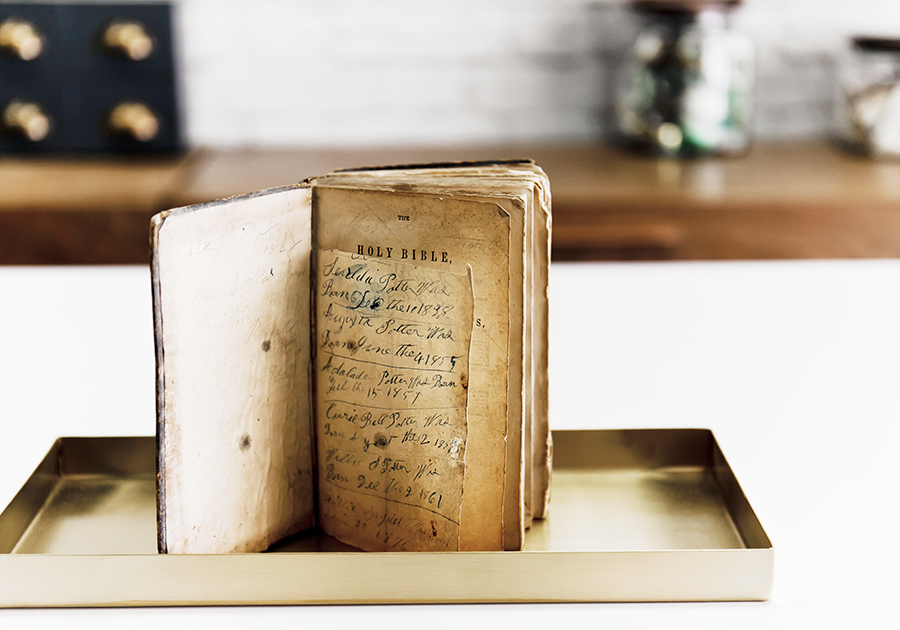
Illuminated and extra-illustrated Bibles can be immensely expressive - and stunning works of art. But altering or journaling in Bibles has historically been about more than the images and personal expression. Before the 20th century, there wasn’t widespread systematic registration of civil vital records such as births, marriages, and deaths. When Bibles began to be widely available to the masses in the 1700’s and 1800’s, they became the repository for these records, with each family having its own “family Bible” that was passed down from generation to generation.
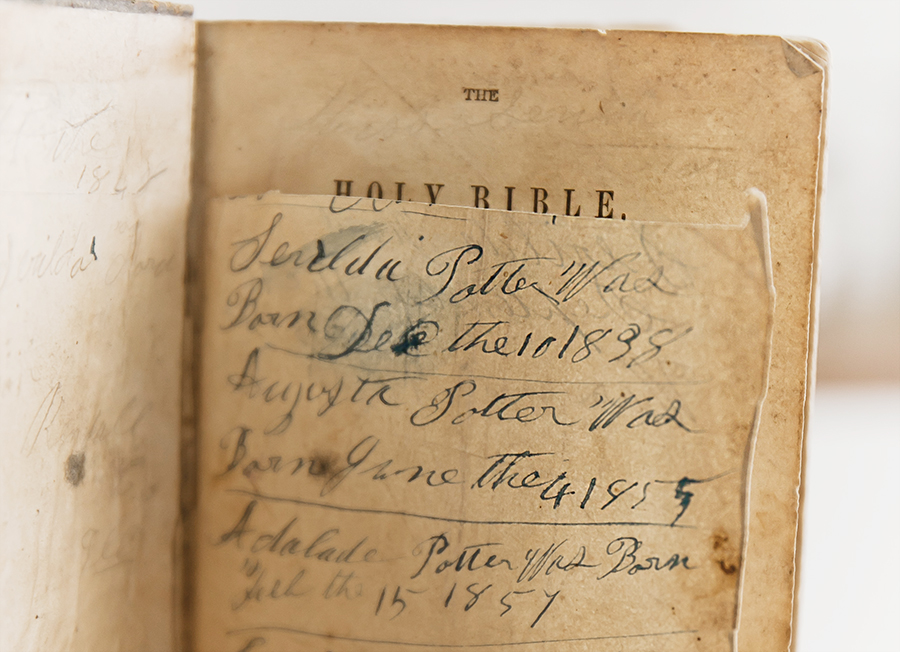
Special pages were included in “family Bible” editions (usually at the front) with space for recording these vital records. Page after page would be filled with notations of family births, deaths and marriages - often with births and deaths in heartbreakingly close succession.
The first example of a family Bible to be printed in the United States is known as the “Collins Bible”. Many post-revolutionary family histories were recorded in the pages of a Collins Bible edition. Printer Isaac Collins of Burlington, NJ printed this Bible edition of 5000 copies in 1791. Commissioned by the Continental Congress, the edition alleviated a shortage of Bibles that was created in the newly formed United States when England was lost as a source to them after the Revolutionary War. Today, the Collins Bible is known among Bible collectors for its attention to detail and textual accuracy. The surviving copies of the 1791 printing are sought after by collectors and are valued at thousands of dollars in good condition.
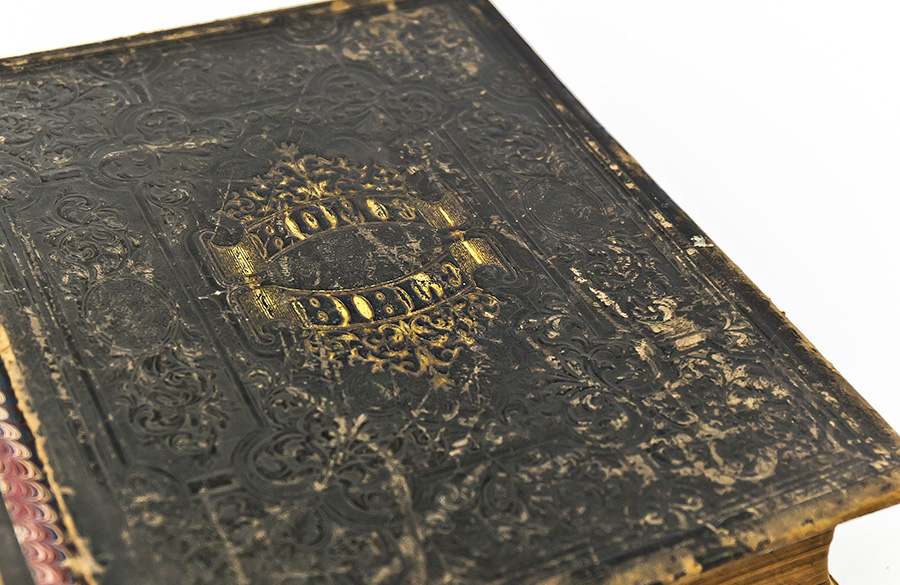
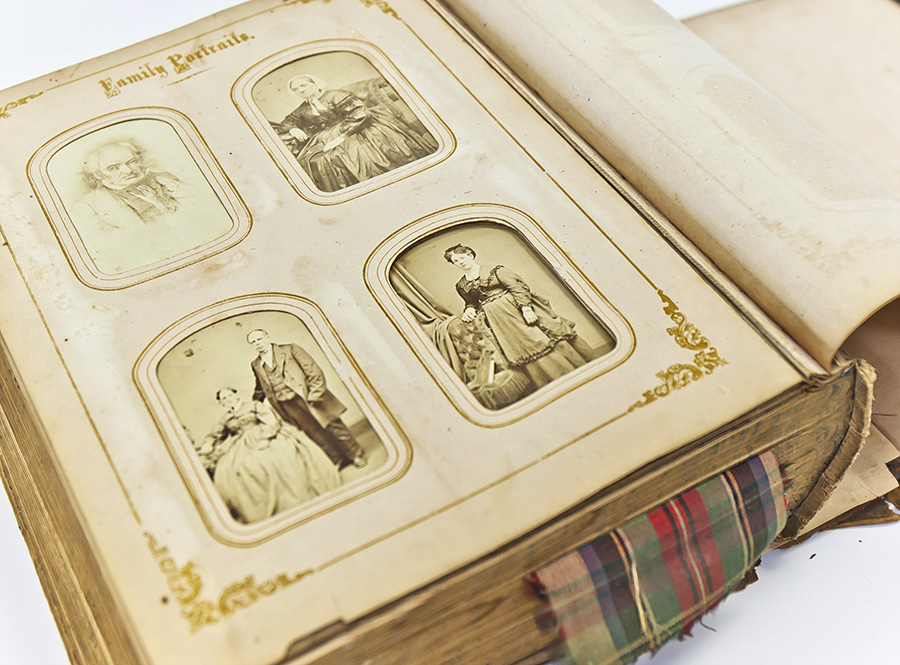
Not only were Bibles created with special pages for handwritten documentation, but many also included photo album insert pages, where family photos could be stored. From the first baby photo to wedding photos and personal portraits, family members and ancestors could now be documented all in one place - the family Bible essentially becoming a scrapbook.
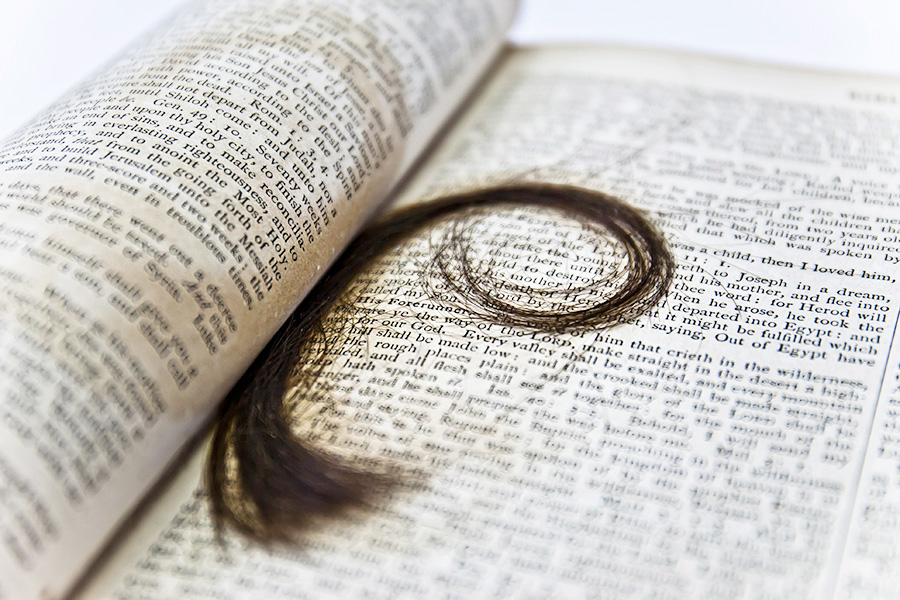
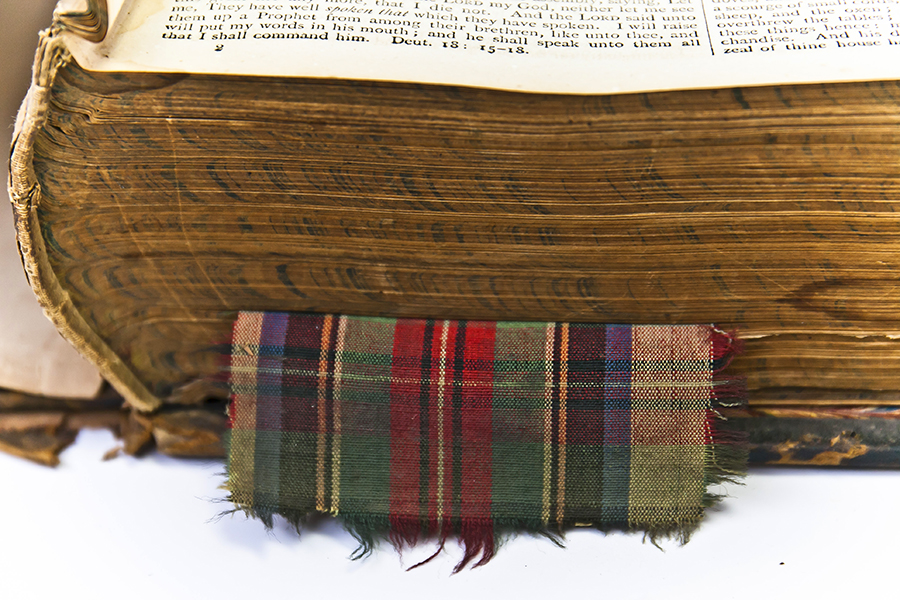
Because Family Bibles became a place for all of the information, records, and photos of the family, other souvenirs, keepsakes, and pieces of memorabilia also began to be collected within - such as locks of hair, tied with a ribbon and pressed safely between the pages, or pieces of fabric from a family tartan. The Family Bible became a resting place for more than holy text.
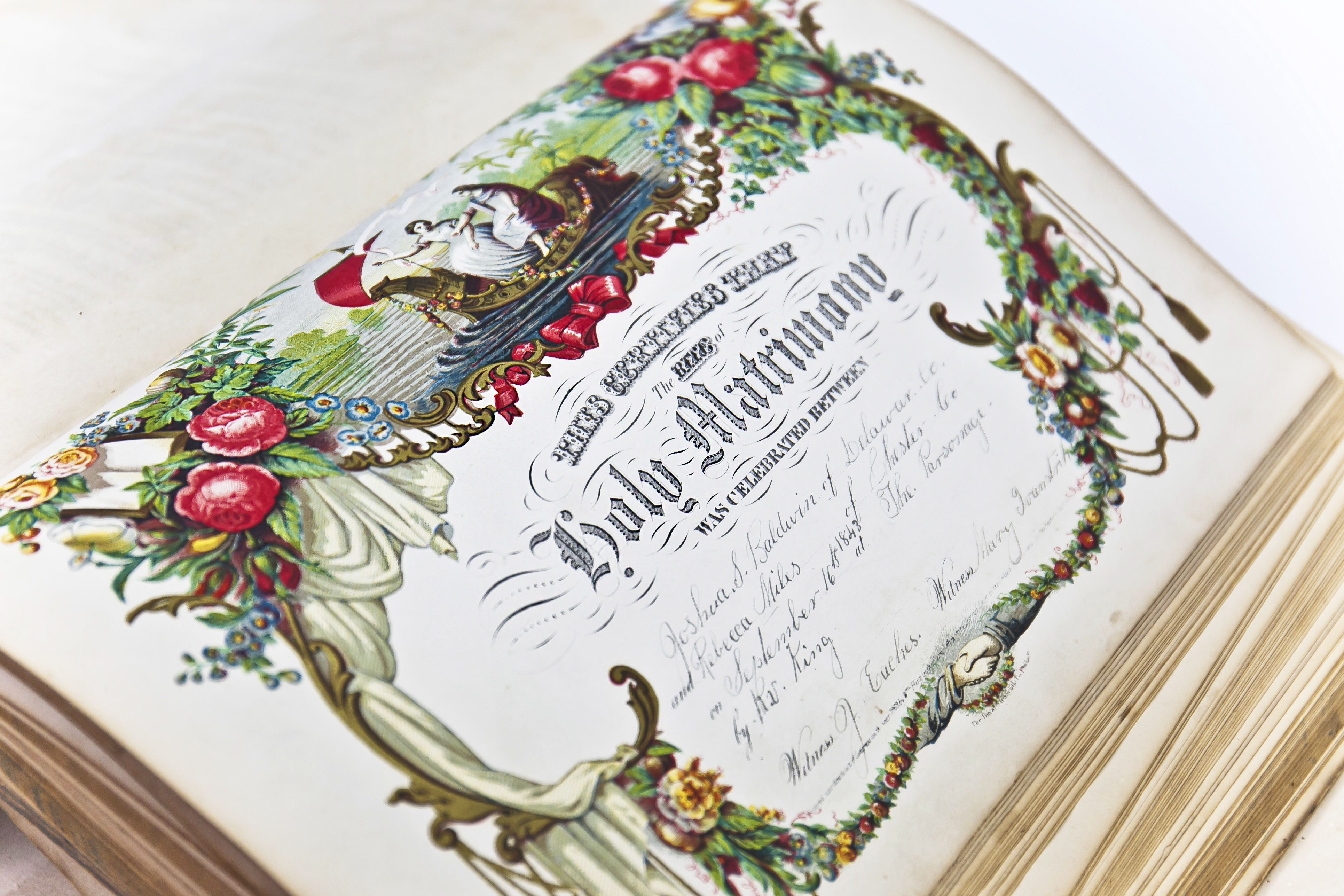
The “family bible” remains a treasure trove of dates and names for today’s genealogists (if one can be found today) throughout the 18th and 19th centuries. When vital records registration became common and Bibles became a personal (instead of a familial) possession in the 20th century, the family Bible began to become a relic of the past. Bibles became tools of spiritual study and comfort, rather than as the primary source of record-keeping.
Marginalia, Making Notes, and Annotating in Personal Bibles
As Bibles became more common personal possessions in the 1800’s, it wasn’t just family histories that were written in them. Bibles began to become personal possessions instead of institutional ones, thus the practice of marginalia (also called margin notes) began to become commonly seen in them. Early medieval Bibles occasionally had marginalia that was created by scholars to note corrections in the text or provide numbers for the sections. But, as books started to become affordable enough to become personal possessions, it became popular for their owners to use the margins to write their thoughts, commentary, and notations alongside the text.
By the 1800’s, the practice of marginalia was immensely popular, and modern day scholars have learned much about the minds of figures of the period like Mark Twain, Edgar Allen Poe, and other writers from their prolific legacy of margin notes. But it wasn’t just literature that had become the subject of marginalia – the popular practice of underlining, making notes, and annotating extended to the Bible as well, resulting in something very recognizable to practitioners of modern Bible study. The practice of marginalia continued in Bibles through the 1900’s, even as it began to largely die out in general literature, except for limited academic use.
Devotional Bibles for Bible Study
Skip forward to the the late 1980s, when the trend of devotional Bible journaling came into popularity. Though it was already commonplace to make margin notes within personal Bibles, Bibles did not cater to the creative devotee. Margins were oftentimes narrow and the pages were not made to withstand additional medium. To suit the new needs of the modern day marginalia minded, the market began to see a rise in Wide Margin Bibles. Wide Margin Bibles were designed with the student in mind, leaving large spaces, sometimes left blank, sometimes lined, to allow space for notes, expansion on thoughts, and doodling.
This trend continued into the 1990s, with Bibles evolving from an addition of wide margins to the addition of extra pages. Depending on the Bible purchased, one might find lined pages, journaling prompts, areas of scripture review, summaries of information, personal-growth surveys, and more - all intended to give the adherent the space to Bible study in a more interactive manner.
Present-Day Bible Journaling
It was 2014 when a papercraft artist named Shanna Noel started a blog called “Illustrated Faith” showcasing her bright, colorful, artistic illustrations in her journaling Bible. The idea of using these Bibles, designed with extra large margins for writing notes during bible study, caught on with readers. Bible journaling (or Bible art journaling, as some call it) was born. Journaling Bibles flew off of store shelves so quickly that they actually became difficult to find for a period.
Barely a year after Noel launched her blog, plans were already underway to launch an “Illustrated Faith” line of products with popular scrapbooking company Bella Blvd. The initial line of products shipped to stores in the summer of 2015 and was an instant success! Since then, the line has grown to include a wide variety of products, including paper, stamps, watercolors, pens, inks, and stickers, all with either spiritual themes in mind, or designed for use on the paper and conditions of journaling Bibles.
Though Bible Journaling is a popular trend, that does not mean that it is without controversy, however. While many Christians embrace its use to commune with scripture and grow their understanding of the Bible, others consider the idea of Bible journaling to be offensive and a defacing of their religion’s sacred text. Some Christians also believe that it distracts from the real purpose of spending time in Bible study and is shallow, derailing deep understanding in favor of creative play.
Many Bible journalers, however, own multiple Bibles, keeping one strictly for study and absorbing the Word, and one for creativity and praising through the gift of art.
Detractors, however, have not stopped Bible journaling from becoming a rapidly growing segment of practitioners within scrapbooking. Those interested in Bible journaling now have dozens of journaling Bible editions to select from that have been newly published in the past year. Several of the most recently published journaling Bibles even include pre-drawn illustrations for beginners? that only need to be colored. And, while Illustrated Faith may have started the craze, today they are far from carrying it alone. A wide variety of companies – from Prima Marketing to BoBunny Press to Pinkfresh Studio and Carolee's Creations – are now making products specifically for Bible journaling, and more are joining in the trend as it grows. More and more blogs and sites dedicated to this beautiful, meaningful art form continue to sprout up, giving Christian-creatives all over the world continuing inspiration.

Bible journaling may feel like the new thing on the scrapbooking scene. But in fact, its roots are nearly a millennium old, based in age-old practices born of necessity and steeped in tradition.














